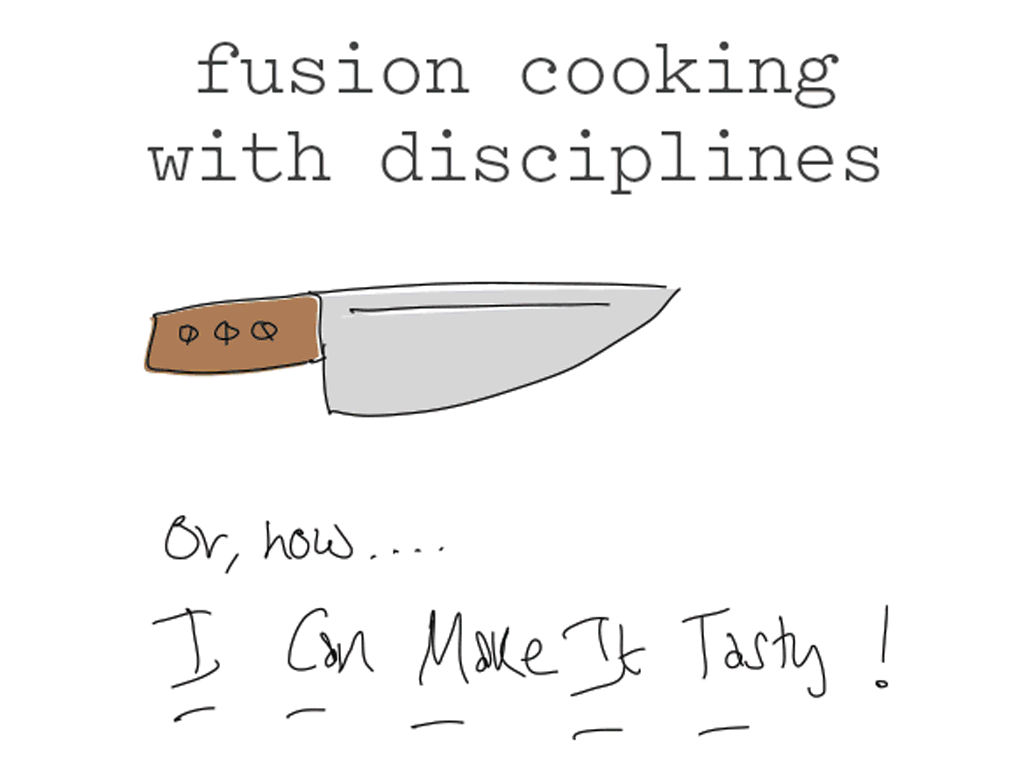Disciplinary recipes: a visual guide! Or, I Can Make It Tasty
In my research proposal for my PhD at the Centre for Science in Society (now the School of Science in Society), one of the areas of terminology I found myself disambiguating was around 'disciplinarities'.
The terms inter-, cross-, multi- and transdisciplinary are a set of words that sound like they could be synonyms, but do have more specific definitions. This came up at a Te Pūnaha Matatini hui in 2019, and luckily by then I had a useful analogy all ‘cooked up’ and ready to serve!
Subsequently, in June 2021 I gave a presentation on this content with Kate Hannah at Royal Society Te Apārangi's He Pito Mata wānanga for early career researchers. Later, in 2024 I was invited back to give a talk to Royal Society Te Apārangi's Fellows. I recorded the voiceover to that here, if you'd prefer a video (with closed captions):
A typology of disciplinarities
Back in 1991, Marilyn Stember's paper described a five step typology for ‘enterprises within and across disciplines’:
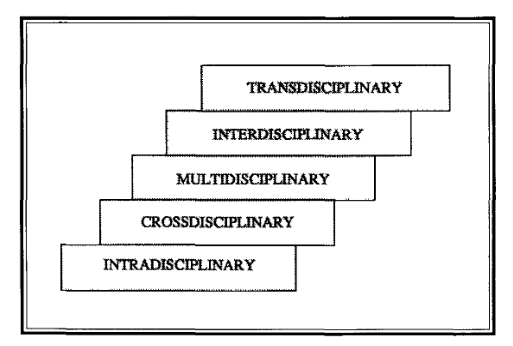
This hierarchical structure runs from intradisciplinary to transdisciplinary, with each step requiring ‘increasing integration and modification of the disciplinary contribution’ (p.5). Generally speaking, this span of descriptions is pretty set in the literature, though sometimes the bottom rungs are omitted (e,g, Choi & Pak, 2006; Nicolescu, 2010) as they don't really represent collaboration across disciplines.
Something's cooking…
It was in Choi & Pak's paper (which I got to via Niklov(a) et al. (n.d.)) that a most interesting set of examples was articulated. First as mathematical equations, and then as food:
| Multidisciplinary | Interdisciplinary | Transdisciplinary | |
|---|---|---|---|
| Keyword | Additive | Interactive | Holistic |
| Mathematical example | 2+2=4 | 2+2=5 | 2+2=yellow |
| Food example | a salad bowl (you can still see the individual ingredients) | a fondue or stew (melting pot) (ingredients are partially distinguishable) | a cake (the output is entirely different to the individual ingredients) |
It was the food analogies (or metaphors? I always tie myself in knots over those) that really struck me. I had enjoyed Alexander Refsum Jensenius's diagramatic articulation of this typology (see below), which started to cement for me how the terms were related but different (though he does a swap on the multi/cross naming convention):

'Sketch of the different disciplinarities' by Alexander Refsum Jensenius (online here)
So I began to wonder if illustrating the food descriptors as a little visual aid might be helpful.
At the Te Pūnaha Matatini hui, I shared this way of remembering via food with my colleagues, and my friend Phil Wilson (from the University of Canterbury and Maths Craft NZ) pointed out to me how convenient it was that you eat a meal in the order salad-stew-cake! That got me thinking about other ways to connect the ‘eating order’ to the actual terms, and I devised the following mnemonic to help me remember:

The ICMIT mnemonic
This kind of works, because as Stember articulated, this is a hierarchical structure of increasing complexity, from intradisciplinary work being wholly within one discipline, to transdisciplinary being a complex ‘greater than the sum of its parts’ transcendence of boundaries. Personally, I see this as increasing 'tastiness', and, it is an indisputable fact that in the Bailey (2019) food pyramid, cake is the apex foodstuff!:
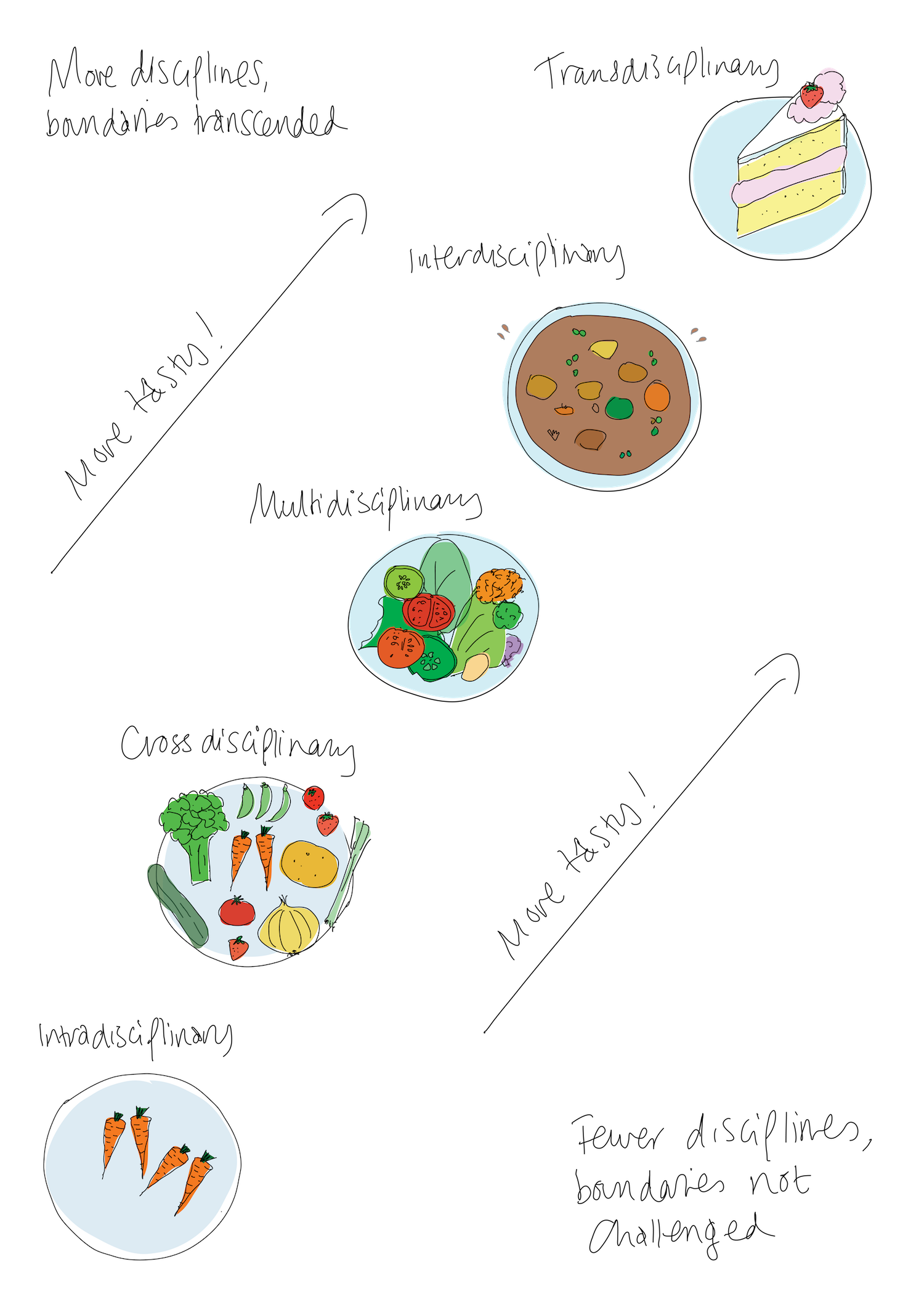
I / Intradisciplinary (single ingredient)
Can / Crossdisciplinary (container of ingredients)
Make / Multidisciplinary (mixed up salad)
It / Interdisciplinary (intermingled stew)
Tasty / Transdisciplinary (totally blended cake)
So that's my ‘recipe book of disciplinarities’, which in more detail looks something a little like this:
Intradisciplinary
|
Crossdisciplinary |
Multidisciplinary |
Interdisciplinary |
Transdisciplinary |
|---|---|---|---|---|
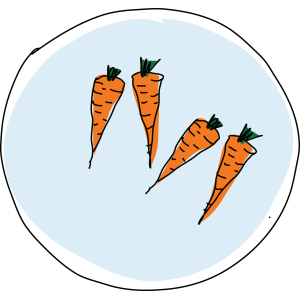 |
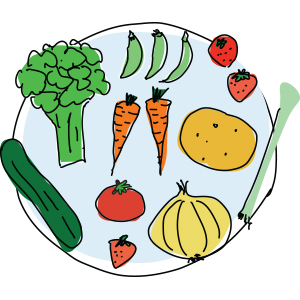 |
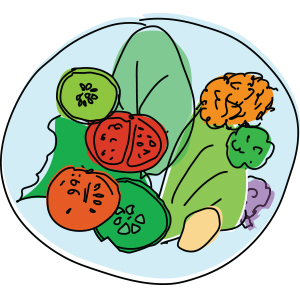 |
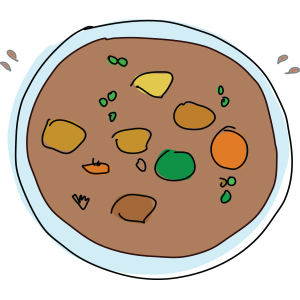 |
 |
|
Intradisciplinary working is within one discipline. Like a single ingredient, clearly distinguishable… |
Crossdisciplinary working views one discipline from the frame of reference of another. It’s like lots of different ingredients on a plate, but without chopping them up and mixing them…
|
Multidisciplinary working brings disciplines together so they can learn from each other, drawing on the mix of disciplinary knowledge. It’s like a salad: the original ingredients are intact, but the flavours begin to blend…
|
Interdisciplinary working starts to take a new form, integrating knowledge and methods from different disciplines and synthesising into a new whole. It’s like a stew: the original ingredients are still partly distinguishable, but the overall is a blended pot of mixed flavours… |
Transdisiplinary working produces a new, novel form or way of working beyond the original disciplinary boundaries. It’s like a cake: you can no longer see the form of the ingredients as they have taken on a different shape and flavour. |
Another flavour of transdisciplinarity
There is another facet to the way transdisciplinary work is described beyond the transcendency of academic boundaries and new flavours to the research. It also relates to projects that integrate both academic researchers from different unrelated disciplines and user-groups to reach a common goal: ‘the inclusion of stakeholders in participatory problem-solving approaches that are applied to tangible, real-world problems’ (Rigolot, 2020). This is sometimes called ‘Mode 2 transdisiplinarity’ (Scholz & Steiner, 2015) and it’s a more practical and applied lens on the practice. It starts to get very close to some terms in science communication that sit at the participation end of the changing models over time that I covered here. Another example of terminology and practice overlapping somewhat, but not entirely across fields (and the need to check in for shared understanding).
Slow cooker…
Personally, I don't feel like I've ever got truly near to a transdisciplinary practice. But, where collaborations do happen across disciplines, getting on the same page with language is a prerequisite for deepening the engagement: necessary prep to get to a stage where cake can be made, then had and eaten!

The people who did the actual hard yards!:
Link to my full Zotero library of interdisciplinary references
- Choi, B. C. K., & Pak, A. W. P. (2006). Multidisciplinarity, interdisciplinarity and transdisciplinarity in health research, services, education and policy: 1. Definitions, objectives, and evidence of effectiveness. Clinical & Investigative Medicine, 29(6), 351–364.
- Jensenius, A. (2012, March 12). Disciplinarities: Intra, cross, multi, inter, trans. Retrieved 18 January 2018, from Alexander Refsum Jensenius website: http://www.arj.no/2012/03/12/disciplinarities-2/
-
Nicolescu, B. (2010). Methodology of Transdisciplinarity–Levels of Reality, Logic of the Included Middle and Complexity. Transdisciplinary Journal of Engineering & Science, 1(1). https://doi.org/10.22545/2010/0009
- Nikolov(a), J. K., Dumitriu, A., Lapointe, F.-J., Malina, R., Menden-Deuer, S., Rubin, C. B., & Vita-More, N. (n.d.). Towards a taxonomy of the challenges within typologies of collaborations between Art-Design-Engineering-Science–Humanities: A practical guide. Retrieved from https://www.researchgate.net/publication/233853232_SEAD_Network_for_Sciences_Engineering_Arts_and_Design
- Rigolot, C. (2020). Transdisciplinarity as a discipline and a way of being: Complementarities and creative tensions. Humanities and Social Sciences Communications, 7(1), 1–5. https://doi.org/10.1057/s41599-020-00598-5
- Scholz, R. W., & Steiner, G. (2015). The real type and ideal type of transdisciplinary processes: Part II—what constraints and obstacles do we meet in practice? Sustainability Science, 10(4), 653–671. https://doi.org/10.1007/s11625-015-0327-3
- Stember, M. (1991). Advancing the social sciences through the interdisciplinary enterprise. The Social Science Journal, 28(1), 1–14. https://doi.org/10.1016/0362-3319(91)90040-B
Resources you can use
The lovely Kathryn at Te Pūnaha Matatini asked for a poster for the meeting room. So, I thought I'd make it available. Then I thought well, may as well make a meal of it and CC the lot. So here goes!
I would really appreciate it if you emailed me if you do want to use any of these resources, just to tell me where.

An A2 poster pdf (also prints ok at A3) which looks like this:
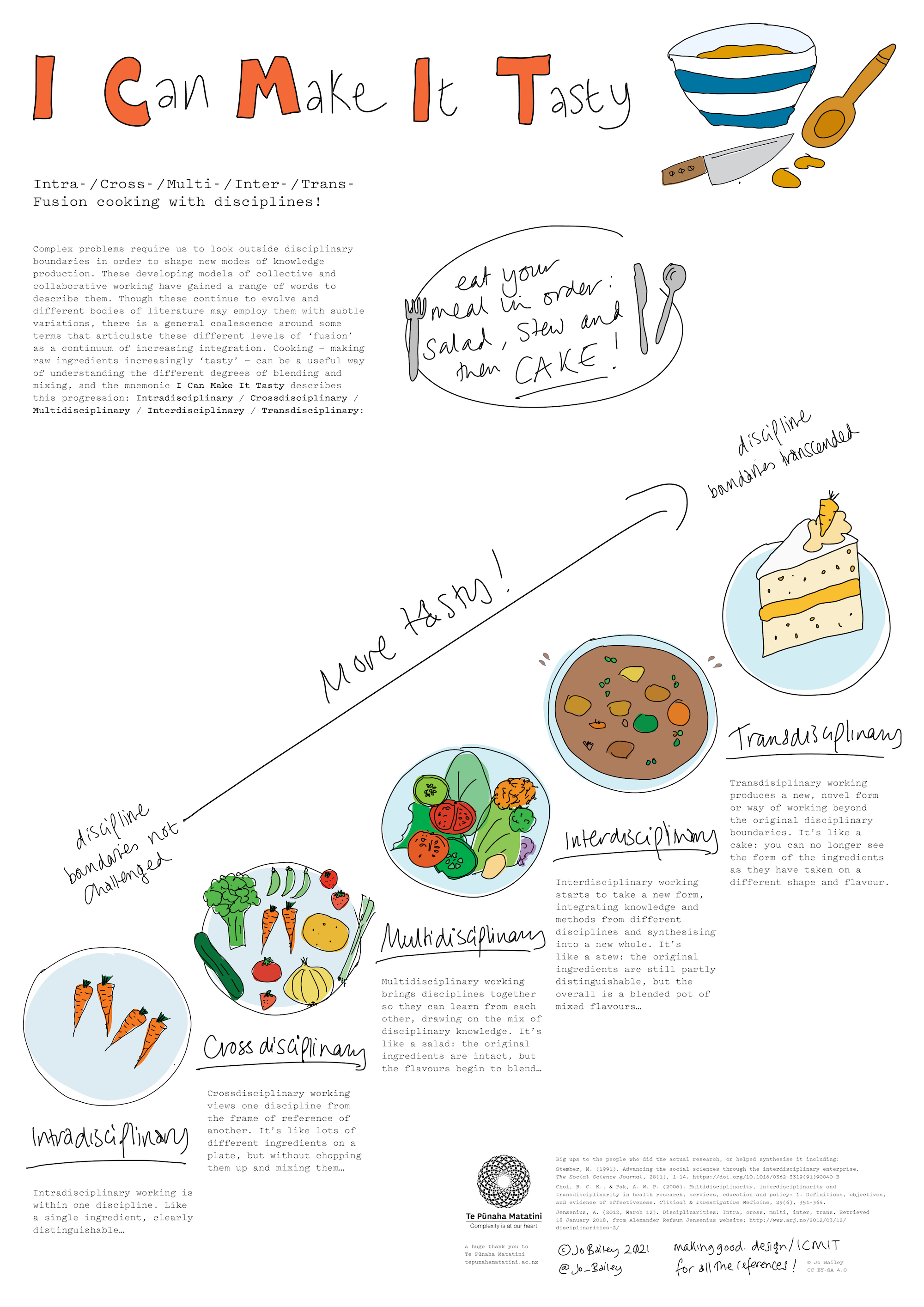
A pdf slide deck of a presentation I gave to Royal Society Te Apārangi in 2024:

A landscape image of the hierarchy as a jpg:
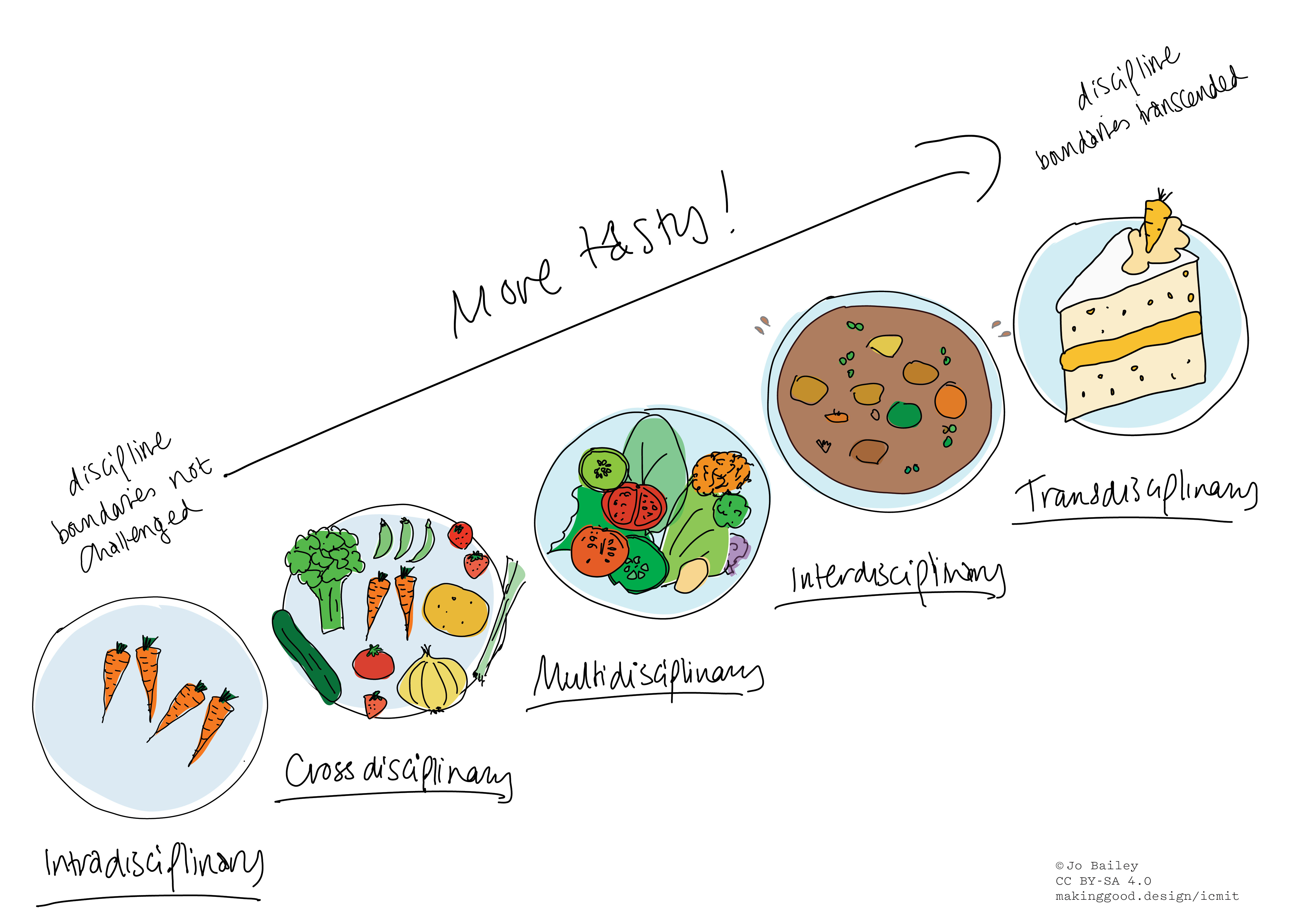
A landscape image of the list with details as a jpg:
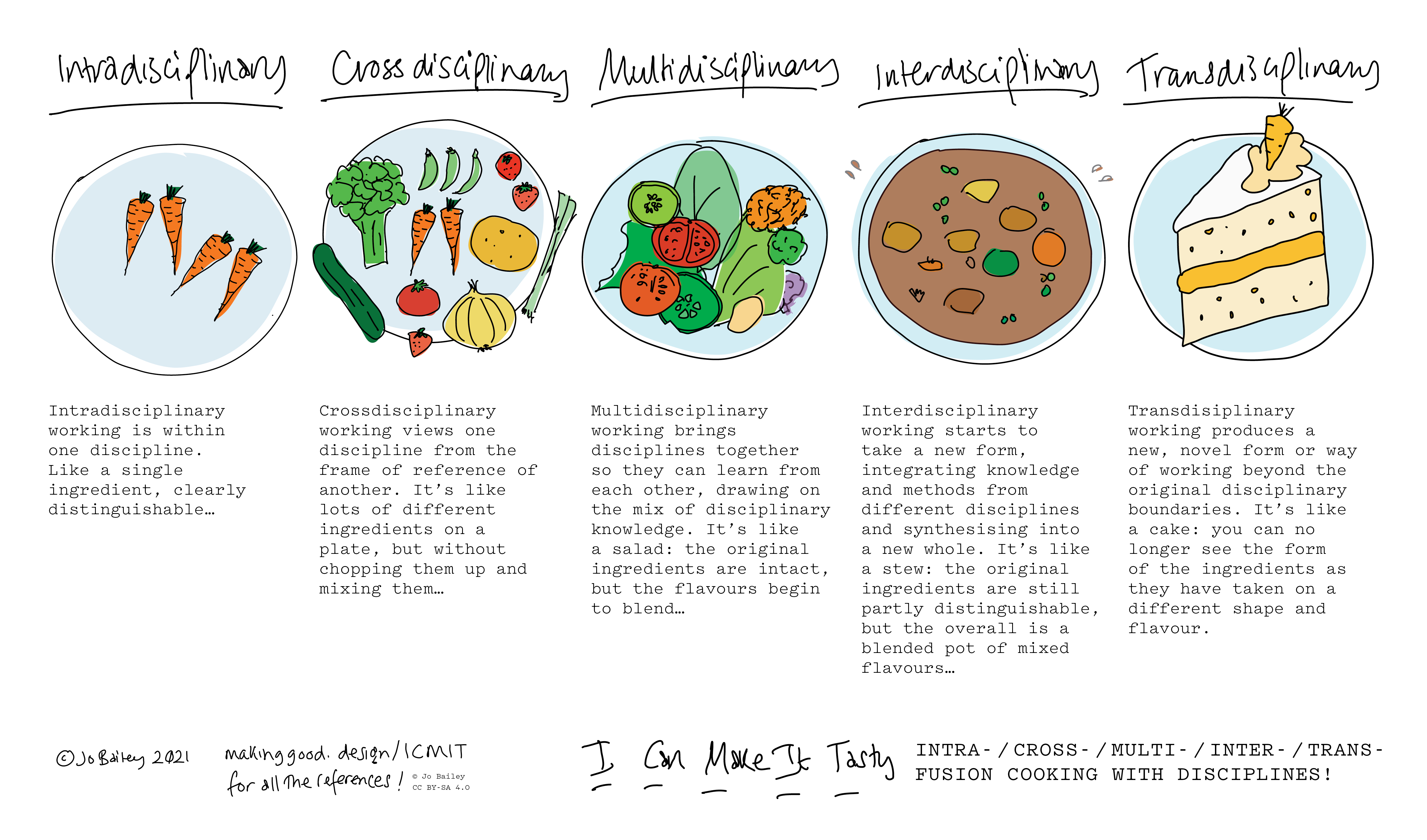
A tall sidebar image as a gif:
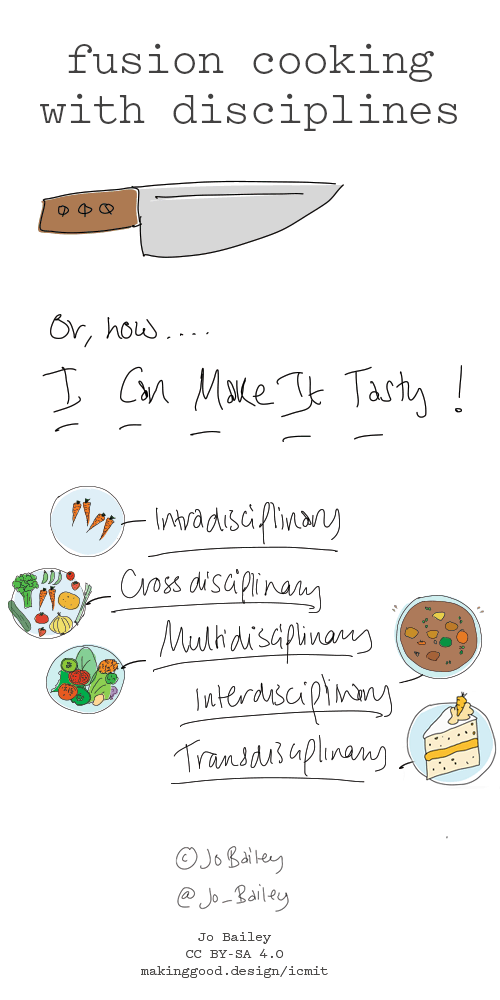
And a rectangular gif:
